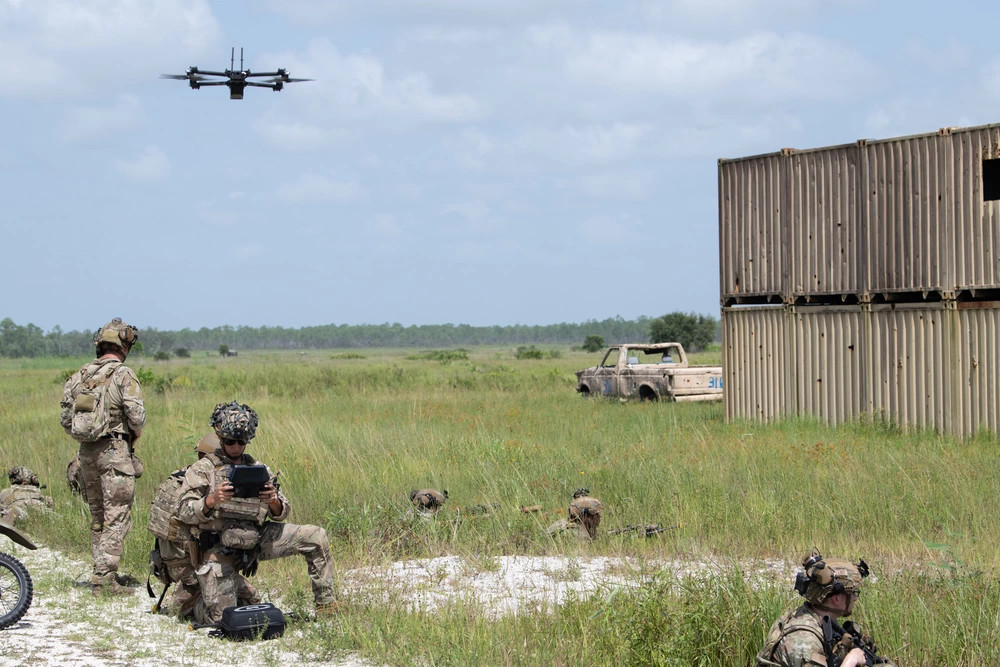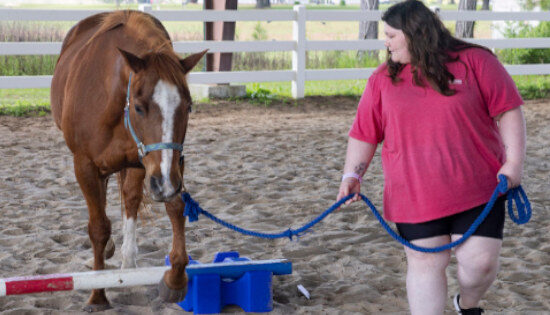Photo: U.S. Air Force HH-60G Pave Hawk helicopter assigned to the 129th Rescue Squadron, 129th Rescue Wing, California Air National Guard, prepares to land in order to drop off simulated patients during a combat search and rescue exercise, August 9, 2023. (U.S. Air National Guard photo by Airman 1st Class Serena Smith)
MOODY AIR FORCE BASE – The 93rd Air Ground Operations Wing Airmen recently completed two training exercises, Red Flag Rescue and a mission readiness exercise.
Release:
The 93rd Air Ground Operations Wing Airmen recently completed two training exercises, Red Flag Rescue for our TACPs and a mission readiness exercise for our Base Defense Group.

TACPs exercise combat rescue support
93rd Air Ground Operations Wing Tactical Air Control Party members rehearsed embedding in U.S. Air Force Guardian Angel personnel recovery teams during exercise Red Flag Rescue 23-2 in Arizona and New Mexico, Aug. 3-18, 2023.
TACPs can embed with these rescue teams as command and control and joint fires experts who coordinate air assets and employ close air support to protect combat rescue personnel during rescue operations.
“The exercise demonstrated that TACPs can be utilized in a multi-role environment,” said Tech. Sgt. Giovan Vitale, 14th Air Support Operations Squadron TACP. “We were allowing Guardian Angel members to focus solely on treating patients and getting them out. The TACP is there to lift the role, from the Guardian Angel team, of infil and exfil from the rescue vehicle, pushing updates to higher headquarters and higher levels of care, and conducting fires within close proximity.”
TACPs integrated into Davis-Monthan’s 563rd Rescue Group over the previous 12 months and will have six TACP Airmen permanently assigned to the group to further their combat rescue capabilities.
“This was to enhance the command and control capabilities of our Lead Wing and Personnel Recovery Task Force,” said Col. Jose Cabrera, 563rd Rescue Group commander. “The TACP expertise and their equipment were critical and helped us improve the agility of our force and resiliency of our C2 networks in highly contested environments.”
The TACPs being embedded in rescue teams alleviated C2 and close air support workloads from rescue team members and diversified the teams to bring a wider breadth of expertise.
“Having the TACPs could be a huge force multiplier, because now we can maximize our support while having an additional party of experts that can fill unseen holes,” said Master Sgt. Tammer Barkouki, 131st Rescue Squadron pararescue team leader.
Future challenges have influenced rescue teams to rethink and rework how they perform combat search and rescue operations.
“As long as we have manned aircraft flying over the line, then CSAR will need to continue to be relevant, and it will have to evolve to face these challenges,” Barkouki said.
Rescue teams identified a need to adjust the way they perform operations, and TACPs have been added as one more resource in their arsenal.
“It’s about adapting to the current environment,” Vitale said. “You’re able to increase the lethality of the team on the ground.”
824 BDS exercise defensive capabilities
Over 100 members from the 820th Base Defense Group conducted the 824th Base Defense Squadron’s mission readiness exercise at Avon Park Air Force Range, Fla., 18-25 August, 2023.
This mission readiness exercise was a five-day certification event designed to ensure the 824 BDS is prepared to conduct defensive operations in support of Lead Wing operations and deployments.
Once certified, the squadron will be able to assume an on-call status to respond anywhere in the world at any given time to execute area defense operations, offensive operations in support of defensive locations, mobile defense and even force protection mission sets.
“We’re looking at not just the single spectrum fight but looking across the full domain of warfare into emerging or known threats in the world,” said Lt. Col. Ryan Kiggins, 824th BDS commander. “We need to be prepared for anything that comes down the line from any adversary in any region of the world and making sure that we’re prepared to operate in contested and degraded environments across the full spectrum.”
The 824th BDS was flown to Avon Park AFR in an HC-130J Combat King II to initiate their continuous five-day exercise; they established a forward operating site complete with a tactical operations center, defensive fighting positions, military working dog patrols, listening posts and observation posts, and solar-powered communications, surveillance, and small unmanned aerial systems (sUAS).
Throughout the exercise, they established three contingency locations to rehearse securing airfields and austere operating locations with motorbikes, M4 carbines, M110 semi-automatic sniper systems, M240 machine guns, AT4 shoulder-fired rockets, and sUAS.
Agile combat employment relies upon these forward operating sites and contingency locations to provide temporary basing options for refueling and rearmament of aircraft closer to the fight to provide flexibility to combatant commanders in how they employ air assets.
“We bring a large capability to the fight, not just for the Air Force, but for the joint community as well,” Kiggins said. “The BDG isn’t a wide-known unit, but we’re capable and ready to put in the work and prepared to be that on-call force that can respond when needed.”
Friendly blue forces were subjected to an array of attacks from red forces comprised of the 823rd BDS who used both traditional and sUAS surveillance and reconnaissance to conduct indirect fires, sniper attacks, and integrated, complex attacks day and night in attempts to degrade security and impede blue force operations.
Exercise planners and red forces attempted to replicate a realistic threat environment and utilize tactics found in modern conflicts.
“When you keep these exercises realistic, it provides the squadron commander with the actual information of their squadron and identifies where their weaknesses are and what they need to improve upon,” said Capt. Bradley Ebers, 820th Base Defense Group exercise planner. “We need to test their capabilities and make sure they’re capable of doing what we need them to do come time for deployment.”
One of the objectives of the exercise was to push Airmen and their equipment to the limit, to identify deficiencies and improvement areas prior to real-world deployments.
“If we inject modern threat scenarios now and what we could possibly see in a future war mindset, then we’re able to find where we fall short or have gaps within our capabilities, and it allows us to build those capabilities now before we get to the possible fight,” Kiggins said.
As the exercise evolved, exercise directors witnessed the 824th BDS make adjustments to operations to better face their adversaries.
“There were plenty of learning opportunities for everyone involved, I definitely think the Airmen came out of this exercise better than they went into it,” Ebers said. “Just in those three or four days, we saw them applying the lessons they learned in their operational planning.”











